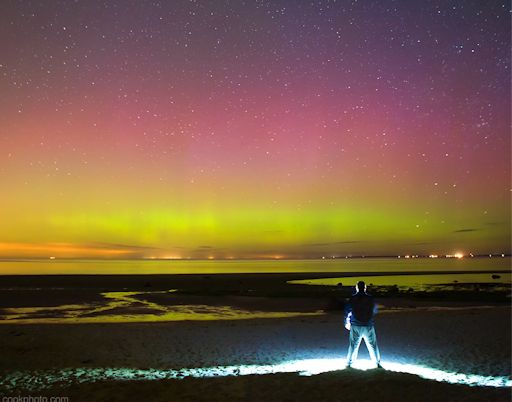RIGHT EXPLOSION ON THE MOON: Recently, a small boulder hit the Moon and exploded with as much energy as 5 tons of TNT. NASA scientists say the explosion was bright enough to see with the naked eye. [full story] [video]
WEEKEND CME STRIKES: Over the weekend, a pair of CMEs hit Earth--one on May 18th (0100 UT) and another on May 19th (2250 UT). The impacts, especially the first one, rattled Earth's magnetic field and sparked Northern Lights visible as far south as Colorado. Some of the brightest appeared over Cape Cod, Massachusetts, where photographer Chris Cook took this self-portrait:

"This is the first time since September 2005 that the lights have been visible from here," says Cook. " It was a beautiful display. During the peak, which lasted about 20 minutes, I could see red and pink pillars with my unaided eye." With only a short exposure, Cook's camera revealed the true depth of color shown above.